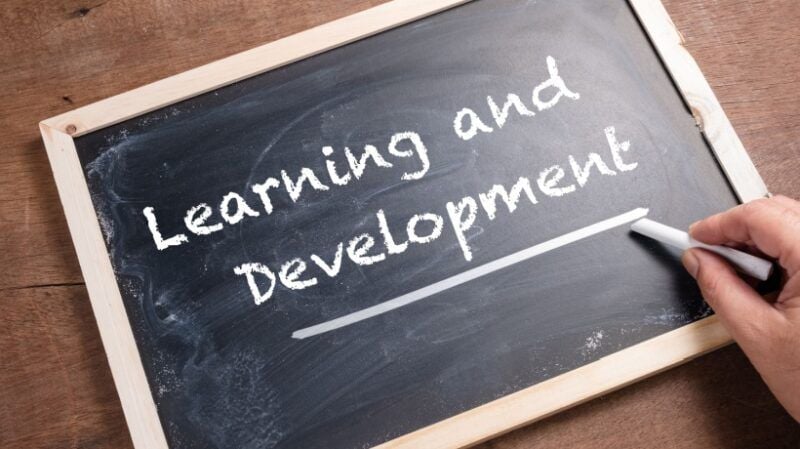
The New Era Of L&D: The Heart Hasn’t Altered
Allow me share something I’ve been seeing up close: Learning and Growth (L&D) isn’t simply advancing, it’s transforming at a pace a lot of us have not experienced before. Think of it. Five years back, we were discussing on-line knowing as a support system. Today, it’s the foundation of just how organizations reskill, preserve, and encourage their labor force. Functions are moving, abilities are continuously being redefined, and growth plans look absolutely nothing like the ones we constructed a years back.
As an L&D professional, I typically listen to leaders ask: “What are one of the most practical developments I can try for my labor force? Exactly how do I also understand what skills to focus on?” If you have actually been wrestling with these inquiries, you’re not the only one. Allow’s unbox what’s taking place and where you can focus your power.
1 From Task Duty To Skills: The Change That Adjustments Every Little Thing
We used to make finding out around static job summaries. Today, work doesn’t fit neatly into those boxes anymore. Organizations are moving towards skills-first strategies. Why? Since abilities are real currency of growth.
- Ability taxonomies and structures (like those constructed right into contemporary LMS platforms) are helping businesses determine what’s missing today and what will certainly be vital tomorrow.
- Internal skill industries are emerging, where workers are matched to jobs based upon skills rather than task titles.
- For you as a leader, this implies reskilling isn’t a side project; it’s your best retention approach.
2 AI Is Below, However It Needs Guardrails
AI is no more advanced; it’s already inside your LMS and discovering method, pushing learners with tailored recommendations. And when done right, it seems like magic.
- Personalized pathways
AI analyzes learner behavior and suggests courses straightened with occupation aspirations. - Time-saving automation
Admin jobs like registration, reporting, and feedback loops are becoming less complicated. - Skill exposure
AI-powered dashboards provide leaders clearness on workforce preparedness.
However right here’s my care: AI is just as strong as the data and governance behind it. Wonder, experiment, but likewise ask suppliers difficult inquiries concerning transparency, prejudice, and data safety.
3 Skills-Based Understanding Fulfills Human-Centered Style
While modern technology can scale, human-centered design makes it stick. The developments I’m most excited around are the ones that blend technology with compassion:
- Microlearning and nudges
Small, just-in-time bursts of understanding that respect learners’ hectic schedules. - Discovering in the circulation of work
Integrations with MS Teams, Slack, or CRMs where staff members currently invest their time. - Career-linked discovering
Advancement prepares that directly link abilities found out to promotions or brand-new chances.
These aren’t just “nice-to-haves.” They’re becoming anticipated.
4 Immersive Discovering Is No Longer An Experiment
Virtual Truth (VR) and Increased Reality (AR) were as soon as buzzwords. Today, they’re useful tools, along with much-utilized simulations, scenario-based discovering, and gamification, specifically for remote and worldwide teams.
- Think of a frontline employee practicing security methods in VR, risk-free.
- Or a new manager stepping into a gamified simulation to exercise leadership conversations.
These immersive techniques increase retention and self-confidence, especially in high-stakes roles. And the good news? Prices are lowering, making them more possible for a broader variety of companies.
5 Cooperation Is The New L&D Superpower
Here’s the reality: in the brand-new era, L&D can not be successful in a silo any longer. One of the most impactful programs I have actually seen were born from solid collaboration between HR, IT, and business leaders.
- HR gives the lens of ability and culture.
- IT guarantees systems incorporate perfectly.
- Magnate connect learning to strategy and growth objectives.
When these voices collaborated, learning ends up being a company vehicle driver, not simply a human resources function.
If You’re Unclear About Abilities Or Priorities, Start Here
Several leaders inform me, “I’m not even clear regarding which abilities matter the majority of.” That’s totally reasonable. The landscape in this new period of L&D is noisy. Below’s a straightforward approach I advise:
- Pay attention to your company method
What’s transforming in your market, item, or customer assumptions? - Check out your workforce data :
Where are individuals leaving? Which groups are having a hard time? - Start tiny with pilots
Choose one area, like electronic fluency, leadership preparedness, or customer experience, and run a concentrated program. Action, learn, range.
Keep in mind: you don’t need to do every little thing at the same time. Also small, willful relocations can create big surges in culture and efficiency.
Final Idea: The Heart Of L&D Hasn’t Changed
Yes, the devices, duties, and strategies are shifting drastically. But at the heart of it, also the new age of L&D is still regarding opening human possibility. As CLOs and L&D leaders, our job is to develop environments where people really feel capable, sustained, and influenced to expand. Whether via AI-driven customization, immersive simulations, or just far better discussions between managers and teams, the goal remains the very same: to assist individuals grow to make sure that companies can flourish.
If you wonder regarding which technologies might work best for your labor force, begin checking out. Try something little, gauge the effect, and don’t be afraid to iterate. Due to the fact that in 2025, one of the most successful L&D leaders will not be the ones that did whatever, they’ll be the ones that moved with intention.